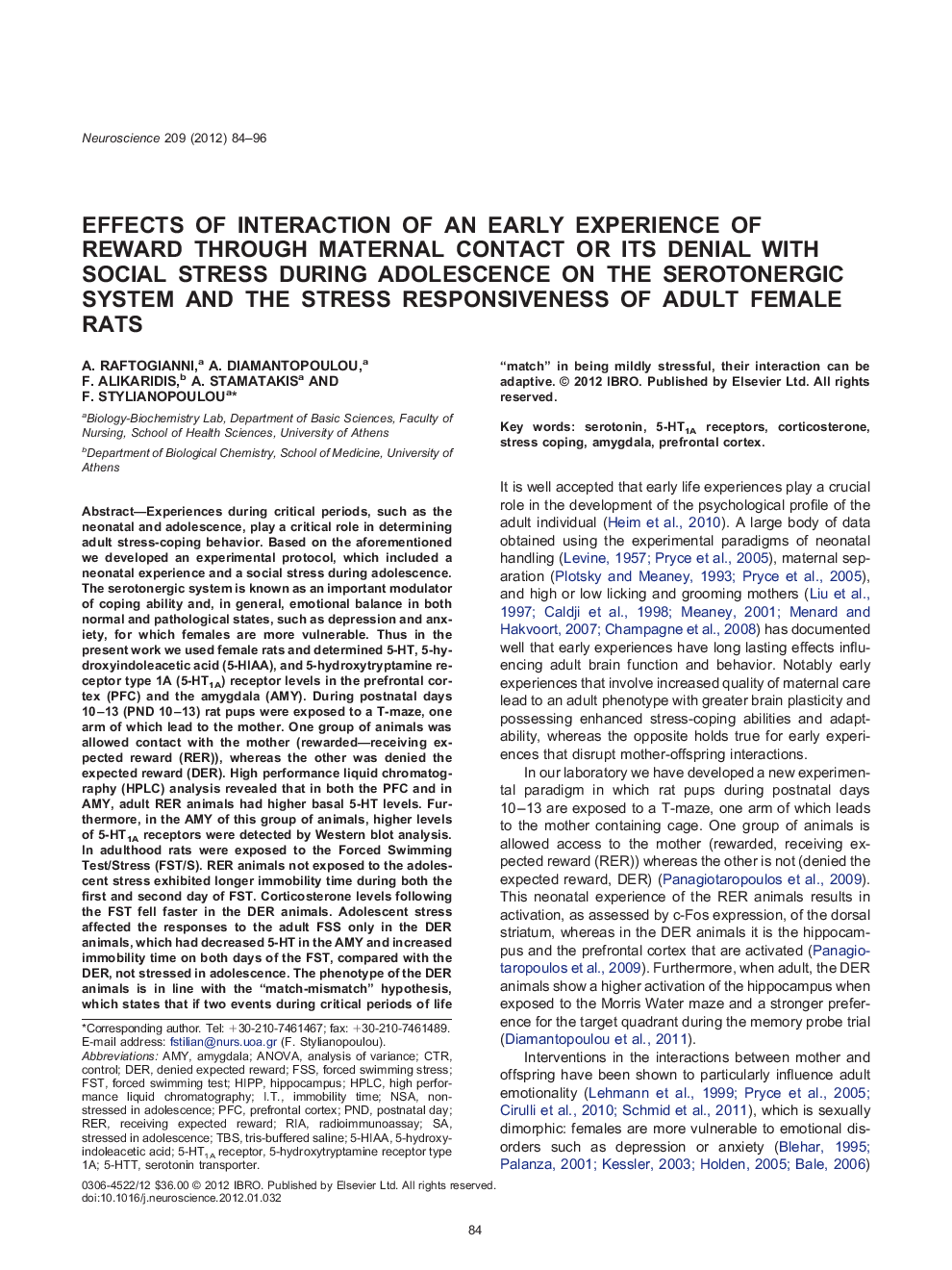| Article ID | Journal | Published Year | Pages | File Type |
|---|---|---|---|---|
| 4338522 | Neuroscience | 2012 | 13 Pages |
Experiences during critical periods, such as the neonatal and adolescence, play a critical role in determining adult stress-coping behavior. Based on the aforementioned we developed an experimental protocol, which included a neonatal experience and a social stress during adolescence. The serotonergic system is known as an important modulator of coping ability and, in general, emotional balance in both normal and pathological states, such as depression and anxiety, for which females are more vulnerable. Thus in the present work we used female rats and determined 5-HT, 5-hydroxyindoleacetic acid (5-HIAA), and 5-hydroxytryptamine receptor type 1A (5-HT1A) receptor levels in the prefrontal cortex (PFC) and the amygdala (AMY). During postnatal days 10–13 (PND 10–13) rat pups were exposed to a T-maze, one arm of which lead to the mother. One group of animals was allowed contact with the mother (rewarded—receiving expected reward (RER)), whereas the other was denied the expected reward (DER). High performance liquid chromatography (HPLC) analysis revealed that in both the PFC and in AMY, adult RER animals had higher basal 5-HT levels. Furthermore, in the AMY of this group of animals, higher levels of 5-HT1A receptors were detected by Western blot analysis. In adulthood rats were exposed to the Forced Swimming Test/Stress (FST/S). RER animals not exposed to the adolescent stress exhibited longer immobility time during both the first and second day of FST. Corticosterone levels following the FST fell faster in the DER animals. Adolescent stress affected the responses to the adult FSS only in the DER animals, which had decreased 5-HT in the AMY and increased immobility time on both days of the FST, compared with the DER, not stressed in adolescence. The phenotype of the DER animals is in line with the “match-mismatch” hypothesis, which states that if two events during critical periods of life “match” in being mildly stressful, their interaction can be adaptive.
▶A novel model of two early experiences: one granting reward, the other delaying it. ▶Our study examines the combined effect of a neonatal and adolescent challenge. ▶The serotonergic system of females is affected by the early experience. ▶Denial of maternal contact neonatally leads to a more adaptive adult phenotype.
